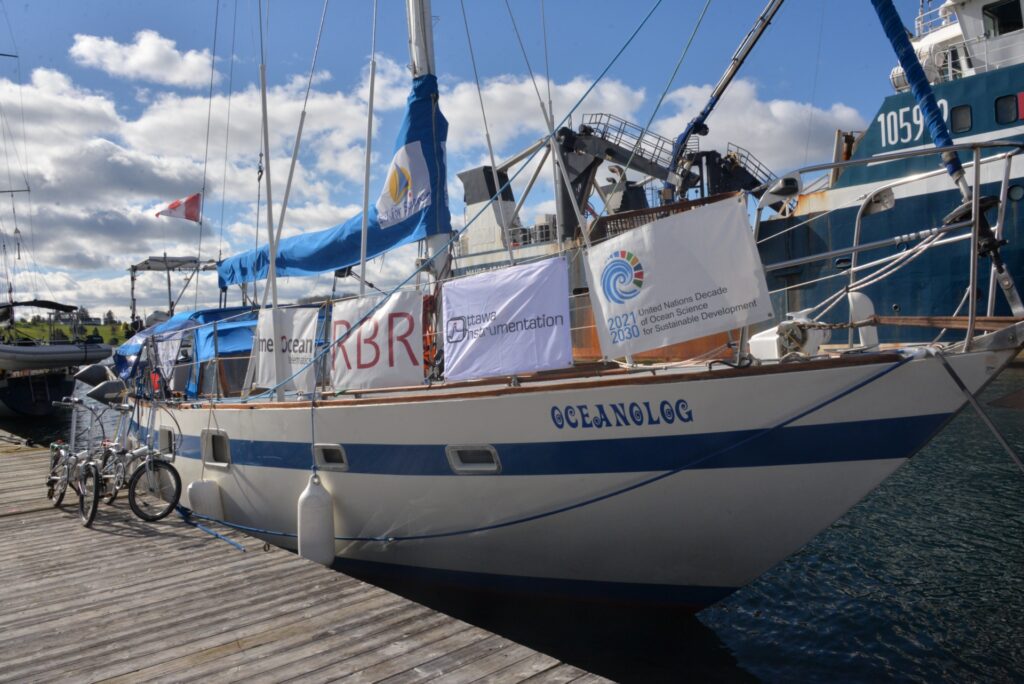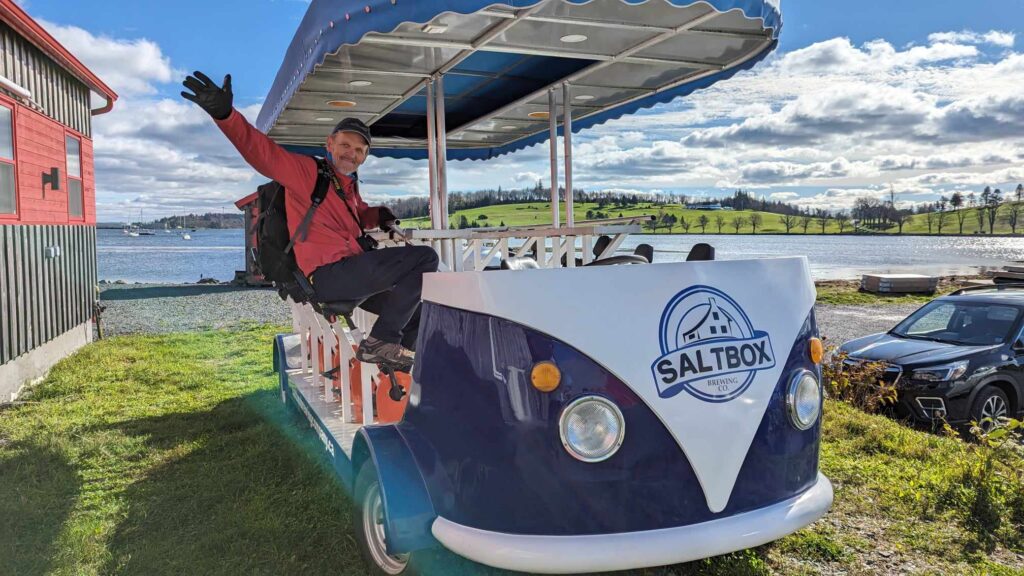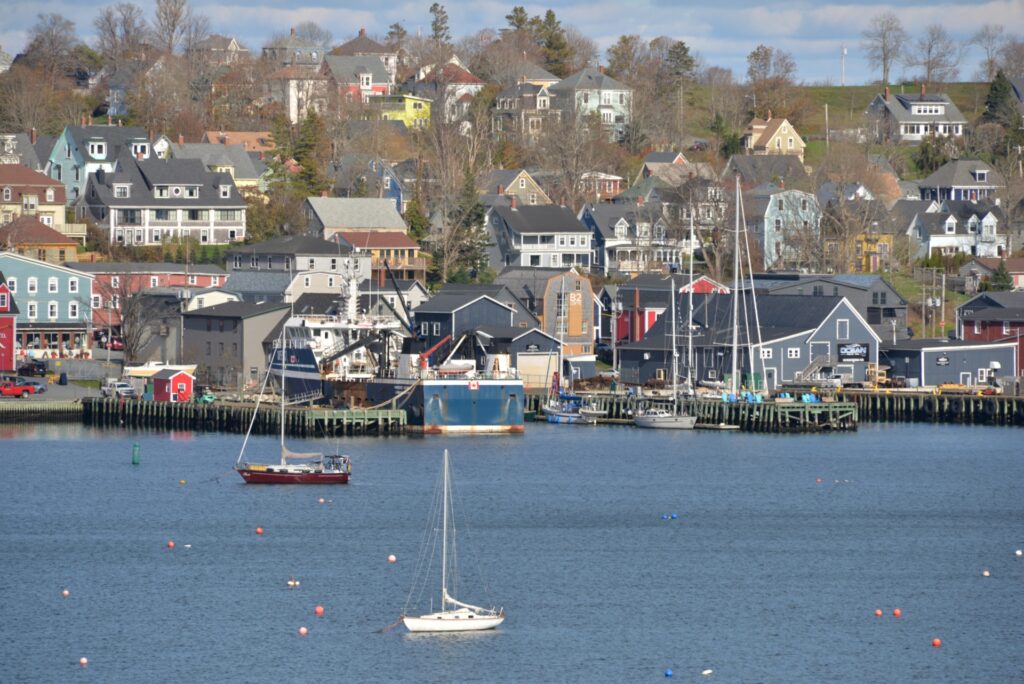It’s time to unpack your folding bikes again and explore the surroundings of Lunenburg. We cycled along the western coast of the bay, admiring the city from the opposite shore. Along the way, we spotted the city’s oldest house (thanks to Yuri’s tip) and several other charming homes. Following that, we pedaled to Mason Beach and visited a mussel farm. It’s worth mentioning that Iryna worked at the Institute of Biology of the South Seas, Academy of Sciences of Ukraine, in the Aquaculture department. She was keen on observing Canadian methods of mussel cultivation.
























